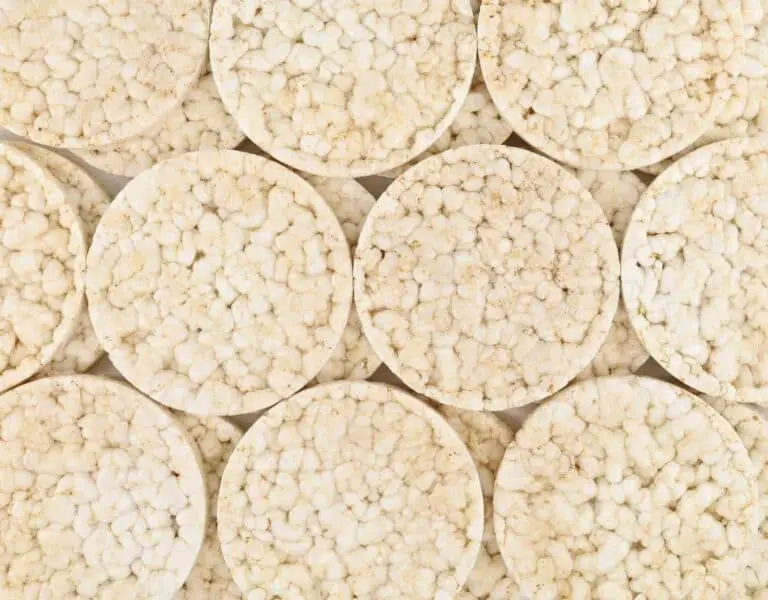Why Are My Roasted Almonds Chewy? Do Roasted Almonds Go Bad?

We’ve all been there: you’re looking forward to a delicious handful of roasted almonds as a snack, but when you bite into them, they’re unexpectedly chewy.
It can be frustrating, especially if you spent time roasting them yourself or paid extra for a bag of pre-roasted almonds. But fear not, there are a few reasons why your roasted almonds might be chewy and some simple steps you can take to ensure that your next batch is perfectly crunchy and satisfying.
In this article, we’ll explore the causes of chewy roasted almonds and offer some tips for achieving the perfect crunch every time. Whether you’re a seasoned snack enthusiast or just looking to up your roasted almond game, this guide has got you covered.
Why Are My Roasted Almonds Chewy
Almonds are a popular and nutritious snack that can be enjoyed in a variety of ways. Roasting almonds is a simple way to enhance their flavor and texture, but sometimes, despite our best efforts, the result can be chewy instead of crunchy.
There are several factors that can contribute to chewy roasted almonds.
1. Moisture of the Almonds
One of the most significant factors is the moisture content of the almonds. If the almonds are not completely dry before roasting, the residual moisture can cause them to become chewy.
This is because the heat of the oven will cause the remaining moisture to expand, which can create steam pockets within the almond. These steam pockets can cause the almond to become puffy and lose its crunch.
2. Roasting Temperature and Duration
The temperature and length of roasting are two other things that can change the way roasted almonds feel. If the temperature is too low or the almonds are roasted for too long, they may become chewy instead of crunchy.
This is because the almonds will not have had enough time to dehydrate and create the desired crispy texture. On the other hand, if the temperature is too high or the almonds are roasted for too little time, they may become burnt or bitter.
To achieve crunchy roasted almonds, it is important to use the right roasting method. One popular method is to roast almonds in the oven. Preheat the oven to 350°F and spread the almonds out in a single layer on a baking sheet. Roast for 10–15 minutes, stirring occasionally, until the almonds are golden brown and fragrant.
Another method is to roast the almonds in a dry skillet over medium heat. This method requires more attention as the almonds need to be stirred constantly to prevent burning.
3. Proper Storage
Finally, proper storage is key to maintaining the crunchiness of roasted almonds. Store the almonds in an airtight container at room temperature for up to two weeks. If the almonds are not properly stored, they may absorb moisture from the air and become chewy.
Shelf Life of Roasted Almonds
In general, roasted almonds can last for several months if stored properly. Unopened packages of roasted almonds can last for up to a year, while opened packages will typically last for several months.
However, it is important to note that these are general guidelines and that the shelf life of roasted almonds can vary depending on a number of factors, such as the conditions in which they are stored, the packaging, and the quality of the nuts.
As mentioned above, roasted almonds should be kept in an airtight container, such as a zip-lock bag or a container with a tight-fitting lid. This will help prevent air and moisture from getting in, which can cause the nuts to spoil faster. It is also important to store roasted almonds in a cool, dry place, away from direct sunlight or heat sources, as heat and light can cause the nuts to go rancid.
Another factor that can affect the shelf life of roasted almonds is the quality of the nuts themselves. Fresh, high-quality almonds that are properly roasted will generally last longer than nuts that are of lower quality or were not roasted properly. It is important to check the expiration date on the package of roasted almonds and to buy from reputable sources to ensure that the nuts are fresh and of good quality.
How to Achieve Crunchy Roasted Almonds
Roasted almonds can be eaten as a snack or added to a variety of dishes to add flavor. Achieving the perfect crunchiness can make all the difference in the enjoyment of this tasty treat.
There are several key steps to take in order to achieve the desired texture of crunchy roasted almonds.
- The first step in achieving crunchy roasted almonds is to start with fresh, high-quality almonds. Older or stale almonds will not roast as well and may not achieve the desired texture. It is best to purchase raw almonds in small quantities and roast them as needed for the freshest and most flavorful results.
- Next, it is important to properly prepare the almonds for roasting. One important step is to soak the almonds in water overnight or for a few hours before roasting. This process not only helps to remove any dirt or debris from the almonds but also helps to soften the skins and make them easier to remove. Removing the skins before roasting can also help to achieve a more even roast and better crunch.
- Once the almonds have been soaked and skinned, they can be roasted using a variety of methods. One popular method is to roast them in the oven. Preheat the oven to 350°F and spread the almonds out in a single layer on a baking sheet. Roast for 10-15 minutes, stirring occasionally, until the almonds are golden brown and fragrant. It’s important to keep an eye on the almonds and stir them often to make sure they roast evenly and don’t get burned.
- Another method for roasting almonds is to use a dry skillet on the stovetop. Heat the skillet over medium heat and add the almonds, stirring frequently. Roast the almonds for 5-10 minutes, or until they are golden brown and fragrant. Again, it is important to monitor the almonds closely to prevent burning and to ensure even roasting.
- To add extra flavor to roasted almonds, consider adding spices or seasonings such as cinnamon, cumin, or sea salt. Simply sprinkle the desired amount of seasoning over the almonds after roasting and stir to coat.
- Finally, it is important to store roasted almonds properly to maintain their crunchiness. Store them in an airtight container at room temperature for up to two weeks. If the almonds are not stored properly, they may absorb moisture from the air and become chewy.
Do Roasted Almonds Go Bad?
Like all nuts, roasted almonds have a limited shelf life and will go bad if they are not stored properly or eaten in a reasonable amount of time. However, the rate at which roasted almonds go bad can vary depending on a number of factors.
One of the main factors that can affect the shelf life of roasted almonds is their exposure to air and moisture. When almonds are exposed to air and moisture, they can become rancid, which is when the fats in the nuts oxidize and break down. This can cause the nuts to develop an off-flavor and smell, and it can also affect their texture.
Another factor that can affect the shelf life of roasted almonds is their exposure to light and heat. When almonds are exposed to light and heat, they can lose their freshness and flavor more quickly. This is why it is important to store roasted almonds in a cool, dry place, away from direct sunlight or heat sources.
The quality of the roasted almonds can also affect their shelf life. Nuts that are of higher quality and are properly roasted will generally last longer than nuts that are of lower quality or were not roasted properly. It is important to buy roasted almonds from reputable sources and to check the expiration date on the package to ensure that the nuts are fresh.
How Do You Know When Roasted Almonds Go Bad?
One of the most common signs that roasted almonds have gone bad is a sharp or bitter taste. This is due to the almonds becoming rancid over time. Rancidity occurs when the fats in the almonds oxidize, which can happen if they are exposed to air or light for an extended period. When the fats in the almonds break down, they can produce a sharp, bitter taste, which is a clear indication that the nuts have gone bad.
Another way to tell if roasted almonds have gone bad is by their smell. If the almonds have a chemical or paint-like smell, this is also a sign that they have turned rancid. This smell can be very strong and unpleasant, and it is a clear indication that the nuts should be discarded.
It is important to note that even if your roasted almonds do not taste or smell bad, they may still have gone bad. Almonds can also become contaminated with bacteria or other harmful substances, which may not be detectable by taste or smell alone. This is why it’s important to store roasted almonds the right way and eat them within a reasonable amount of time.






